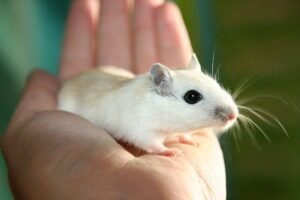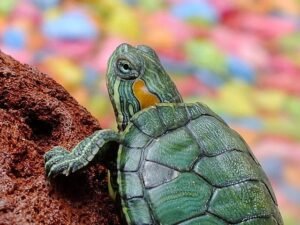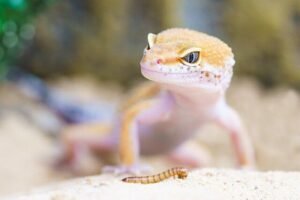Adopting pets is an exciting and fantastic experience for your kids. But, having a pet at home might be challenging if you don’t know how to care for them. Adopting a pet requires a significant change in one’s lifestyle.
It is critical to learn everything you can about any animal before taking it into your home. What are the advantages and disadvantages? What is its lifespan? Is it a suitable pet for children? What does it consume? Does it affect other pets if you have any others?
Not every home is suitable for large animals. Some pets are not for everyone, and even some cats can grow to be quite large. If you live in a limited space or want a “beginning pet” that your youngster can care for, bigger is not better.
Even if your space isn’t suitable for a cat or dog, there are several reasons why you might wish to have a pet. Any pet owner will agree to the fact that having a pet has many advantages. There are also psychological benefits of having pets for young kids.
Responsibility, trust, and compassion are three of the most important lessons that come with owning a pet. Furthermore, when young children have pets, they can learn about devotion, respect, and patience.
Some Benefits of Having a Pet for Children
- Kids learn about empathy through pets.
- Pets instill responsibility in children.
- Pets instill confidence in children.
- Children will learn to care for living creatures.
- Proper schedule
- Play and exercise
- Low stress
Things to know about pets before adopting
If it is your child’s first pet, families on the fence about getting one should start small. Adopting a family pet is a lot of fun, but it also comes with a lot of responsibility. You’re bringing a new member into the family, so be sure you choose a pet you’ll be able to commit to.
You want a pet who will fit in with your child’s personality and way of life. When picking a pet, consider everything from temperament to feeding to the care and life span.
Whatever type of pet you choose, make sure to do as much research as possible. Know what kind of food the pets eat, what supplies they need, and what their routines are, among other things. The better prepared you are, the more enjoyable it will be for you, your children, and your pet.
Pets for kids must be easy to care for. Also, remind your youngster to always wash their hands after petting their pet.
Things you should keep in mind while adopting a pet:
- Pet’s Temperament
- Expected Life Span
- Veterinary center
- Pet’s Affection on handling
- Feeding habits
- Affordable costs
- Fascinating to watch and play with
12 Best Small Pets For Your Kids To Choose From
Our first and best buddy is generally a childhood pet. Pets teach us how to form close relationships with the people we spend most of our time with—positive engagement with a pet aids in developing social skills in children.
Some smaller and simple-to-handle pets might be the ideal pet choices for your children’s first pet.
Fish
 With stunning colors, intricate patterns, and hypnotic movements, fishes have a soothing vibe and are also peaceful to watch.
With stunning colors, intricate patterns, and hypnotic movements, fishes have a soothing vibe and are also peaceful to watch.
Fish are popular with children because they are entertaining to watch, easy to feed, and fun to name. Even small children can do appropriate tasks, which teach them responsibility. As long as they’re supervised, youngsters can help change the water, put in the water conditioner, or sprinkle some flakes.
So, what kind of fish are you looking for, a lone wolf or a school of fish? Is it a mix of species? You have a lot of options for a beautiful assortment of fish to choose from.
Goldfish are an excellent choice for kid’s pets, which are over 200 different varieties. Comets, Fantails, Black moors, and Shubunkins are also popular kinds. Tropical fish like danios, barbs, guppies, and platys are excellent choices too.
Fish have a terrible reputation for having short lives, yet they can live for at least three to five years if cared for. Some breeds can live for ten years or more. The common goldfish, for example, is one of the most popular pet fish breeds, growing up to eight inches long and living up to twenty years.
Hedgehog
 These spiny creatures aren’t the most cuddly of pets, but they are cute and friendly. Hedgehogs will become social with your child if they are handled when they are young.
These spiny creatures aren’t the most cuddly of pets, but they are cute and friendly. Hedgehogs will become social with your child if they are handled when they are young.
One disadvantage is that you may wind up spending more money on their care. According to Dr. Quesenberry, an exotic pets expert, Hedgehogs need more attention than other small pets since they are more prone to health problems.
Because hedgehogs are omnivores, they are more prone to sickness and can develop mouth cancer and mites, so your vet spends a little more.
Hedgehogs also need a particular diet that includes vegetables and a specific protein-rich chow. You should consult your veterinarian first. If you’re thinking of getting a hedgehog as a pet, make sure to check your state regulations first. It’s prohibited to own these little mammals in several areas.
Hedgehogs can be little social pets that provide emotional support and can make children happy. Caring for hedgehogs can also give a child a sense of purpose and responsibility. Hedgehogs have a lifespan of five to seven years.
Chinchillas
 Chinchillas are more exotic pets for kids who like to observe rather than interact with their pets. Despite their friendly nature, chinchillas may be pretty agile and swift, making them unsuitable for small children who cannot handle them.
Chinchillas are more exotic pets for kids who like to observe rather than interact with their pets. Despite their friendly nature, chinchillas may be pretty agile and swift, making them unsuitable for small children who cannot handle them.
Chinchillas can be challenging to work with at times. The majority of chinchillas enjoy getting rubbed and will seek you out for it, but some do not. A chinchilla takes months, if not years, to begin associating positively and desiring to interact with you.
Chinchillas who aren’t used to handling may become afraid, bite, or pee as a result. Allowing your chinchilla to engage with you or your children at their own pace is critical for a pleasant outcome.
Another essential bit of chinchilla information is how sensitive their digestion can be. Chinchillas need to eat a dry diet, almost devoid of sugar and fat. One of the activities that youngsters like is feeding animals, and there are many unhealthy snacks for pets.
Chinchillas need a dust bath rather than a water bath. You can buy chinchilla dust which is mainly made to resemble the dust found in their natural environment.
Chinchilla can live for 20 years. Chinchillas are not challenging to keep, but they do live a long time. You have to consider if your child wants to continue to look after them for the duration of their childhood and into adulthood. It is something that the entire family should think about.
Rabbit
 Rabbits are incredible creatures, and we can all agree that they are lovely. Rabbits are often thought of as the ideal child’s pet; they’re cute, fluffy, and low-maintenance.
Rabbits are incredible creatures, and we can all agree that they are lovely. Rabbits are often thought of as the ideal child’s pet; they’re cute, fluffy, and low-maintenance.
Picking up and caressing a rabbit feels affectionate to us, but it feels like an attack on them. Rabbits will fight back with all their might in such cases. In contrast to their flighty behavior, Rabbits can learn to appreciate human contact when all four of their feet are on the ground. Urge your children to get down to their level and allow the bunny to come to them.
With repeated, gentle handling, some rabbits can become acclimated to the activity. It requires patience, but the results are well worth it. Many rabbits will fall asleep while you softly rub their nose and cheeks.
Rabbits’ digestive systems are fragile, and improper food can lead to gastrointestinal (GI) stasis. All rabbits need is daily access to high-quality hay and washed fresh greens.
You must understand your rabbit’s demands to maintain them healthy and happy throughout their lives. Most domestic rabbits live to be at least eight years old, and many life to be at least 12 years old.
Ferrets
 A ferret may not seem like the most suitable pet, but it can be a good fit for individuals who are willing to put in some effort in exchange for a pet that is usually fun, friendly, and playful. Ferrets need daily handling from a young age to make them more friendly.
A ferret may not seem like the most suitable pet, but it can be a good fit for individuals who are willing to put in some effort in exchange for a pet that is usually fun, friendly, and playful. Ferrets need daily handling from a young age to make them more friendly.
Ferrets can be demanding pets and need almost continual monitoring when they are outside of their cage. You’ll need to provide plenty of attention and company for your ferret. Ferrets are curious, so cages must be robust and safe to prevent their ingenious efforts to escape. It will give your ferret lots of areas to walk about and explore without feeling restricted.
They like exploring their surroundings with their mouths in particular. Given their potential for biting, they should be socialized as soon as possible to avoid aggressive behavior.
Ferrets are severe carnivores who need a diet high in meat. Ferrets must eat tiny amounts of food daily because of their high metabolic rates, rather than once or twice per day as most pets do. At all times, there must be clean and fresh water available. Your ferret could become quite unwell if this is not the case.
Ferrets have a lifespan of up to ten years, but the average is approximately six.
Hamsters
 This popular tiny pet is simple to look after and can even be trained to use the litter box. Dr. Quesenberry, an exotic pets expert at New York City’s Animal Medical Center, warns that hamsters can be nippy, and some small breeds, primarily females, can be aggressive. Some hamsters are challenging to handle as a result of this.
This popular tiny pet is simple to look after and can even be trained to use the litter box. Dr. Quesenberry, an exotic pets expert at New York City’s Animal Medical Center, warns that hamsters can be nippy, and some small breeds, primarily females, can be aggressive. Some hamsters are challenging to handle as a result of this.
Selecting a giant breed like the Syrian hamster is recommended, which is more likely to adjust to being handled. Hamsters require gentle handling and can be easily startled by loud noises or quick movements.
The home of the hamsters is a spacious and ventilated cage with tunnels and nesting spots for sleeping, but easy to clean.
A hamster has a three-year lifespan, so think about how much your child will want to interact with it. The kid might lose interest in caring for the hamster during these years, but they may also seem too short if they grow fond of the pet.
Gerbils
 Gerbils are excellent children’s pets; they provide many hours of enjoyment and entertainment. Even though caring for a gerbil is simple, you should be aware of a few things before adopting one of these friendly rodents into your home.
Gerbils are excellent children’s pets; they provide many hours of enjoyment and entertainment. Even though caring for a gerbil is simple, you should be aware of a few things before adopting one of these friendly rodents into your home.
Gerbils, unlike hamsters, are very social animals, and living alone can be detrimental to their health. According to studies, gerbils who live with other gerbils live longer and healthier lives. Isolated gerbils are sickly, overweight, and have shorter lifespans. If you’re bringing a gerbil into your home, it’s possible that bringing two at once will be better.
Gerbils are delicate creatures, so if you’re buying one for a youngster, you should always supervise them when they’re being handled. More prominent, predatory pets, including cats, dogs, and even ferrets, should be kept away from your gerbil. Also, never grasp or hold a gerbil by the tail, as this might result in significant injury.
Gerbils, like any other pet, need to see a veterinarian regularly. These regular veterinary examinations are necessary to keep your pet healthy and happy.
Guinea pigs
 Guinea pigs and hamsters belong to the same rodent family, yet their personalities are worlds apart. They make excellent pets for kids because these rodents are mild and sweet-natured; they are less inclined to bite.
Guinea pigs and hamsters belong to the same rodent family, yet their personalities are worlds apart. They make excellent pets for kids because these rodents are mild and sweet-natured; they are less inclined to bite.
People don’t realize that guinea pigs have a lot of personalities. Some guinea pigs are shy, while others are outgoing and assertive. Just because two guinea pigs appear the same does not guarantee they will behave similarly. Before you get a guinea pig, make sure you engage with the pet to make sure their personality matches yours.
They are fantastic pets since they are not as frail as rabbits and are less fearful than smaller rodents like hamsters and gerbils. They’re also friendly, so they don’t mind being handled as long as it’s done correctly and they don’t mind if young children interact with them.
The life span of pets is vital for families to consider if they consider adopting a guinea pig. Since Guinea pigs live for a long time, you must be prepared to care for the guinea pig even after the children have grown up and moved out.
While most hamsters, gerbils, and rats live for two to three years on average, guinea pigs survive for five to seven years on average. Some even live for a more extended period.
Turtles
 In the right circumstances, a pet turtle can be a fantastic first pet for a child. They’re usually low-maintenance after initial setup. It can be fun for a child to play with, and caring for one can be a very educational experience.
In the right circumstances, a pet turtle can be a fantastic first pet for a child. They’re usually low-maintenance after initial setup. It can be fun for a child to play with, and caring for one can be a very educational experience.
Turtles are also intellectual creatures. Turtles are better than rats at learning to navigate mazes. According to researchers, they can be taught to perform simple activities. They have even demonstrated long-term memory capacities.
When evaluating if a pet turtle is acceptable for your child, keep all the above factors in mind. A pet tortoise or turtle is a big commitment, especially for a child. It teaches your child a lot about patience and life in general. These are gifts that your youngster will cherish for the rest of their life.
When purchasing a turtle for a small child, keep in mind that the turtle will most likely live for a long time. It implies that they will be a significant investment.
The longevity will, of course, vary depending on the sort of turtle you get. The estimated lifespan of a turtle is to be between 20 and 30 years. Turtles kept as pets can live for 40 years or more.
Iguanas
 Tamed Iguanas make lovely family pets for kids. They get along with both other animals and children in the house. If reared adequately, they can be caring, social creatures.
Tamed Iguanas make lovely family pets for kids. They get along with both other animals and children in the house. If reared adequately, they can be caring, social creatures.
Iguana is a reptile that can grow up to five feet long as an adult. It is one of the aspects of iguana ownership that makes them challenging pets. It isn’t easy to provide a large enough environment for a grown iguana.
Non-tamed iguanas can be very violent, especially during the breeding season. Iguanas don’t bite often, but when they do, they bite hard. A tail-whip from a 20-pound reptile may be pretty painful.
Many iguanas suffer from intestinal parasites, mites, and other common diseases. With adequate veterinary care, treatment is easy. But it can result in death if left untreated.
One of the most challenging elements of pet ownership is losing a pet. An iguana thrives on fruits and vegetables and may live for an extended period. So, having a longer lifespan means you won’t have to go through it as often.
Gecko
 A gecko can be an amazing and unique pet if you have the interest and motivation for it. The leopard gecko and the crested gecko are two gecko species that you may view as suitable “beginning geckos” for a budding gecko lover.
A gecko can be an amazing and unique pet if you have the interest and motivation for it. The leopard gecko and the crested gecko are two gecko species that you may view as suitable “beginning geckos” for a budding gecko lover.
- Leopard geckos are the easiest pet lizards to care for, making them ideal for beginners and children. Leopard geckos have a mild temperament, so they are easy to handle. It has an average length of 9 inches. They are available in a variety of colors, designs, and eye colors.
- Crested geckos’ name comes from the fringed crests that run across their eyes, neck, and back. They grow to be about 8 inches long and are smaller than leopard geckos. Also, they resemble small dragons, making them excellent pet lizards for older children.
Crested geckos are tree climbers and need a giant terrarium with enough foliage to climb on.
While you hold crested geckos, they are wary of humans and can be challenging to handle. Try handling them for only a few minutes at first. Then use the “hand walking” method by putting one hand out in front of the other, then swapping hands as your gecko walks from the extended hand to the other.
Geckos are desert creatures who enjoy the heat. A ceramic heat emitter or low-wattage incandescent bulb is the simplest way to heat your gecko’s environment. Use a thermometer to ensure adequate temperatures on the heated side.
A gecko can live up to 20 years, so you have to consider if your kid will still take care of it when they grow older. If not, it will be up to you to take care of it.
Birds
Even though, depending on their age, your child may need supervision when caring for their bird. It can teach kids a lot about handling small pets.
- Finches and canaries are the most excellent pet birds for children since they need little interaction and are simple to care for. These birds are particularly popular with young children as they are fascinating to see and provide relaxing “music” with their quiet chirps and chats.
 Finches, most of the time, are not interested in connecting with humans. So, if you’re going to get a finch, get two or more to keep them company. Finches are delicate birds that need careful handling.
Finches, most of the time, are not interested in connecting with humans. So, if you’re going to get a finch, get two or more to keep them company. Finches are delicate birds that need careful handling.
Finches are attractive birds to have in your home, even if they are not a hands-on species. They can also give children a fun and instructive experience.
Furthermore, while some finches and canaries with training can allow handling, the bulk of these birds out of their cages is not a good idea.
- Budgies (or parakeets), also known as “budgerigars,” come second on the list of most excellent pet birds for kids. For young aviculturists, these colorful small birds can be a lot of fun. They can withstand a lot of handling, are generally easy to care for, and learn to communicate.
They have kind attitudes and form close bonds with their owners, making them ideal companions for young bird enthusiasts.
If your youngster wants a bird that will be their best friend, go with a budgie.
Most hand-fed budgies are friendly and eager to please. But, because budgies are small and delicate, children should learn bird handling techniques.
- Cockatiels are larger than finches and budgies; they are still among the most excellent pet birds for children. Children will enjoy them since they can learn to talk, whistle, and do tricks.
Cockatiels thrive in the company of children who have the leisure to connect with them. They enjoy being outside of the cage and demand a little more attention than finches or budgies.
Choose a cockatiel for children who have a strong desire to keep and learn about birds.
Pets with a short lifespan expose your child to death for the first time. Unless your child has lost a family member or friend, it can also present an opportunity for a valuable life lesson. It can be depressing, but it can also be a method to introduce the concept that everything dies. And as your child goes through the process, you may be present with them.
Conclusion
Kids enjoy the comfort and company provided by pets. Children find comfort and security in their pet companions regardless of their mood, which means they are less worried or distant.
Having a pet strengthens family ties because they are the center of family activities. Sharing the love and care of a pet creates a new link between siblings. By cuddling pets, stress, loneliness, and anxiety are all reduced.
Also, feeding and caring for a pet instills responsibility in children. Kids who own pets have had better impulse control, social skills, and self-esteem. Adopting a pet is beneficial for your kids but adopting the right pet is also very important.
Frequently Asked Questions
What about diseases from pets?
Pets can have the potential to infect your kids with an illness. All reptiles carry and spread Salmonella germs, which cause severe diarrhea. Your child should be safe as long as they follow good hygiene. Always wash hands after playing with a pet and before eating.
What is the appropriate age for kids to adopt pets?
If you want to buy a pet for your child as a companion, wait until they are old enough to handle and care for the animal. Usually around the age of 5 or 6 because younger children can’t tell the difference between animals. They may instigate a bite by mocking or mistreating the pet.
Also Read: 8 Best Slackline for Kids
Also Read: Best Ball Toys For Toddlers To Play With
















